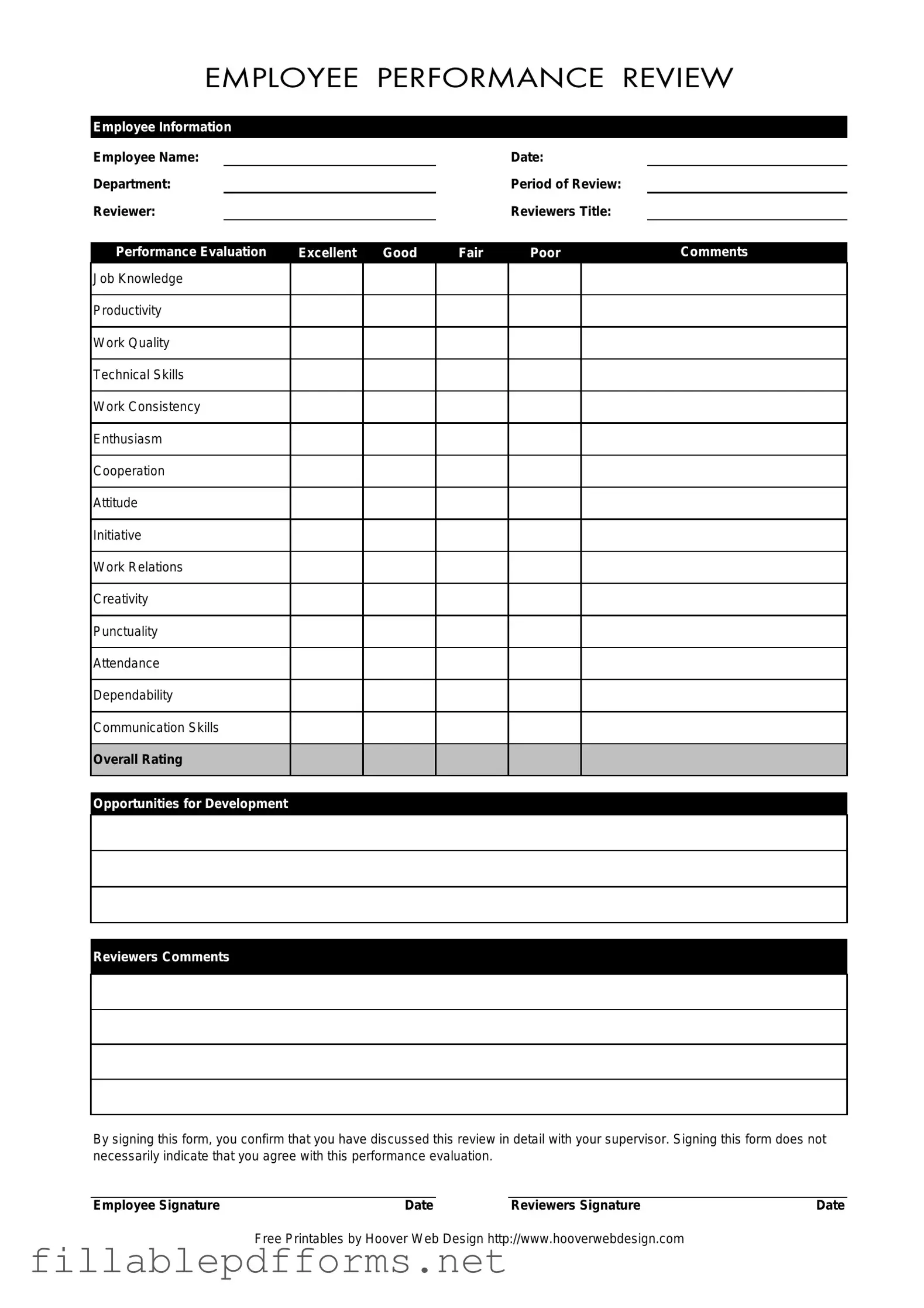The Employee form serves as a vital tool in the performance evaluation process, providing a structured way to assess and document an employee's contributions and areas for improvement. At the heart of this form lies essential employee information, including the employee's name, department, and the period under review. The reviewer’s details, such as their title, are also captured, ensuring accountability in the evaluation process. The form includes various performance metrics, ranging from job knowledge and productivity to communication skills and overall rating, allowing for a comprehensive assessment of an employee’s strengths and weaknesses. Each category is rated on a scale from excellent to poor, accompanied by space for comments that offer valuable context and insights. Furthermore, opportunities for development are highlighted, encouraging a forward-looking approach to professional growth. The signatures of both the employee and the reviewer at the bottom signify that the evaluation has been discussed in detail, although it’s important to note that signing does not imply agreement with the assessment. This form not only fosters open communication between employees and supervisors but also plays a crucial role in shaping future performance and development strategies.
